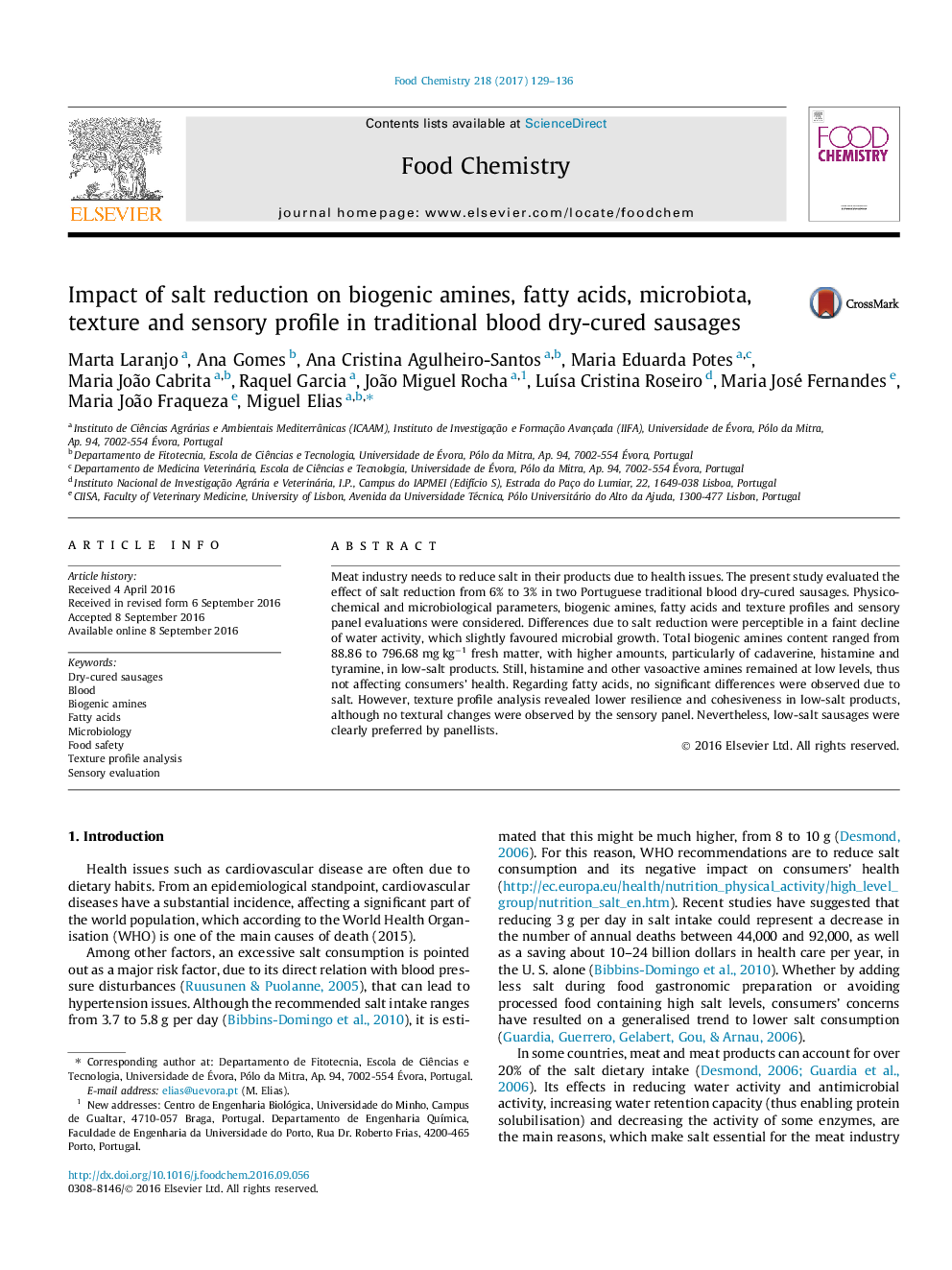| Article ID | Journal | Published Year | Pages | File Type |
|---|---|---|---|---|
| 5134047 | Food Chemistry | 2017 | 8 Pages |
â¢Reducing salt content in food is required by the WHO due to health problems.â¢Biogenic amines content of low-salt dry-cured sausages is not a risk for consumers' health.â¢Salt reduction significantly increased the level of most individual biogenic amines.â¢Low-salt sausages were clearly preferred in the sensory analysis.
Meat industry needs to reduce salt in their products due to health issues. The present study evaluated the effect of salt reduction from 6% to 3% in two Portuguese traditional blood dry-cured sausages. Physicochemical and microbiological parameters, biogenic amines, fatty acids and texture profiles and sensory panel evaluations were considered. Differences due to salt reduction were perceptible in a faint decline of water activity, which slightly favoured microbial growth. Total biogenic amines content ranged from 88.86 to 796.68 mg kgâ1 fresh matter, with higher amounts, particularly of cadaverine, histamine and tyramine, in low-salt products. Still, histamine and other vasoactive amines remained at low levels, thus not affecting consumers' health. Regarding fatty acids, no significant differences were observed due to salt. However, texture profile analysis revealed lower resilience and cohesiveness in low-salt products, although no textural changes were observed by the sensory panel. Nevertheless, low-salt sausages were clearly preferred by panellists.
